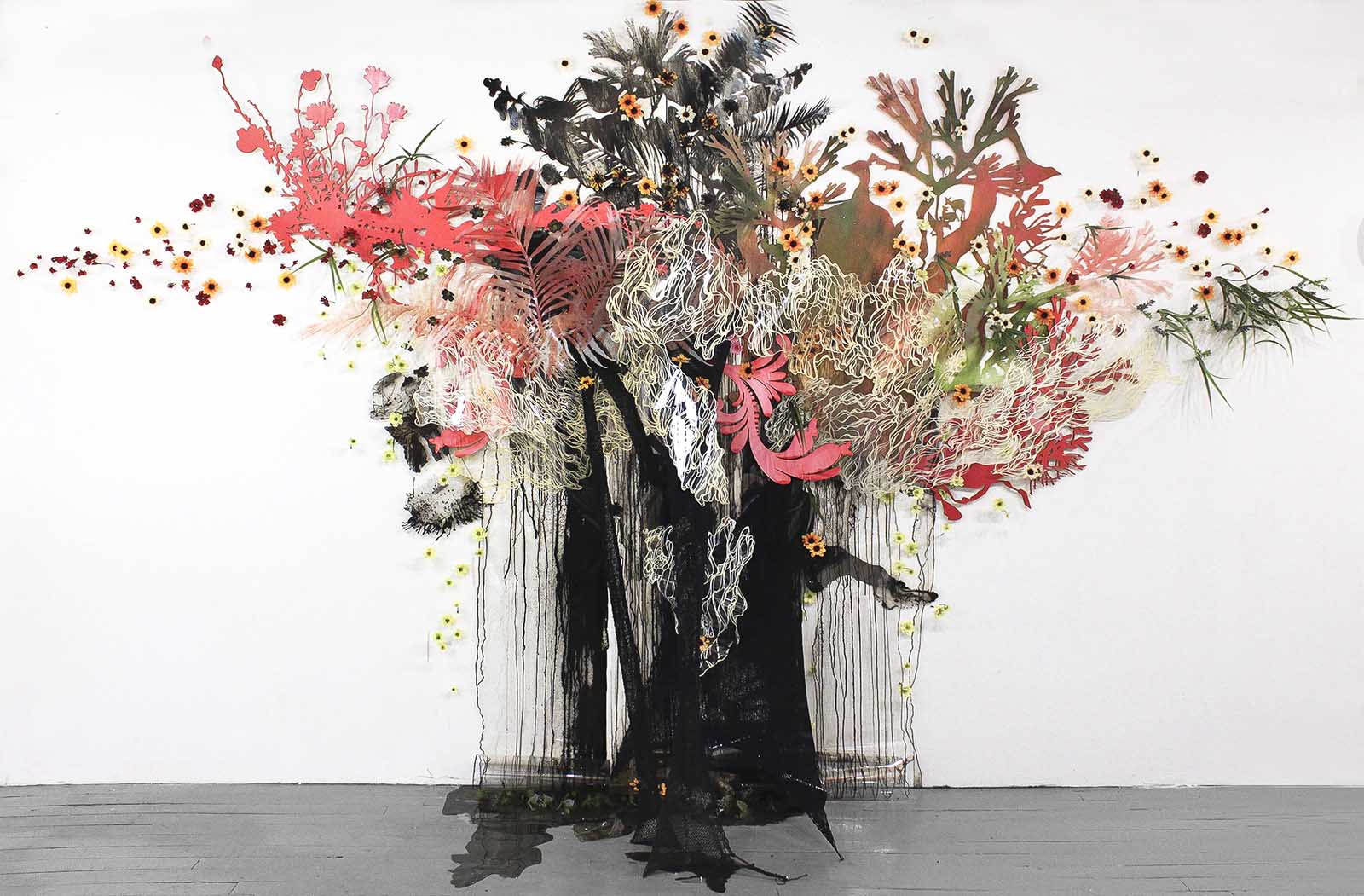
Gaia, Part 2
Resa Blatman, 2015
Oil and latex paint on laser-cut PVC, PETG and Mylar, knitted yarn, silk and plastic flora, 96″h x 168″w x 24″d
Image © 2015, courtesy of the artist
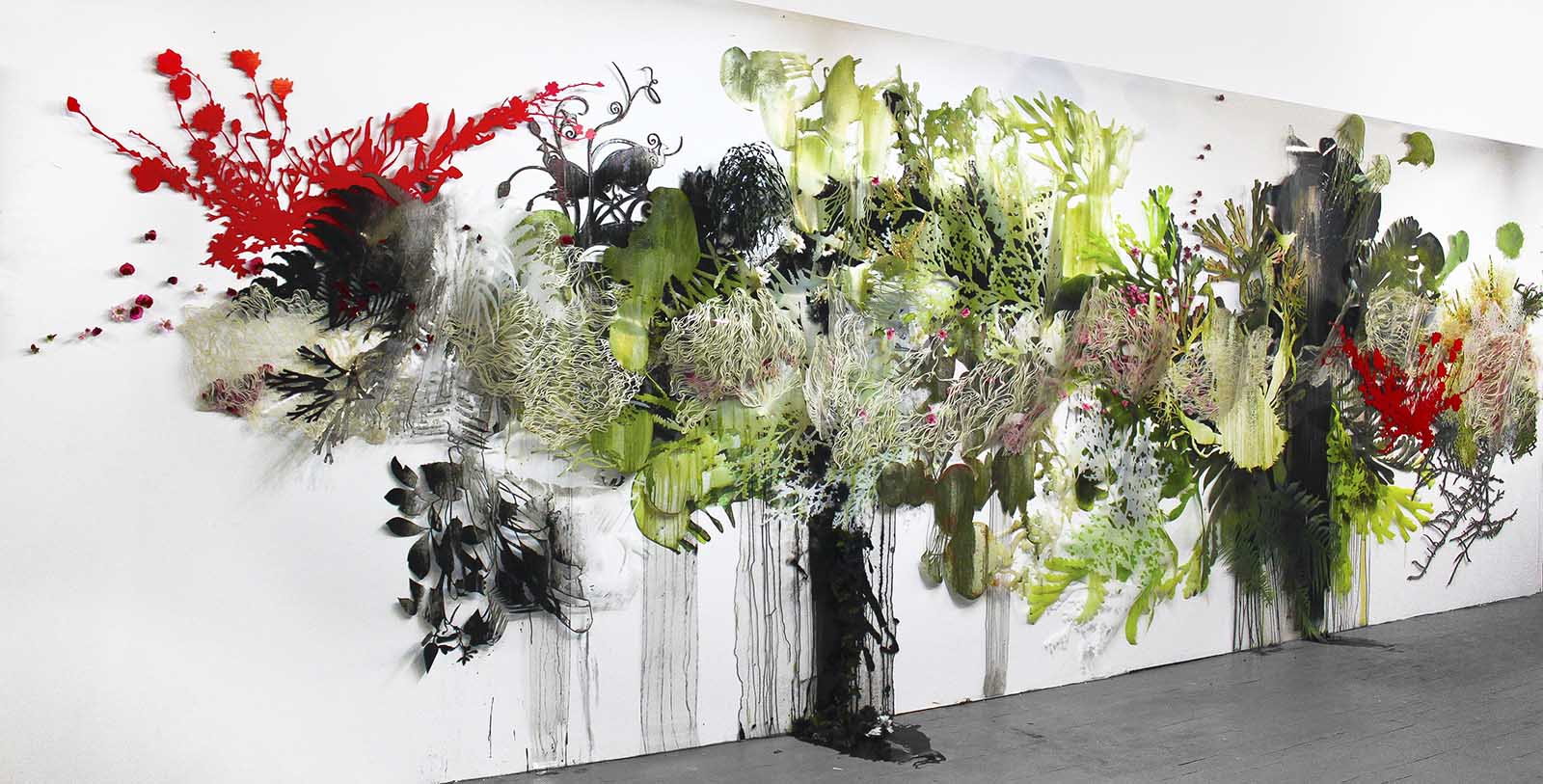
Gaia, Part 1
Resa Blatman, 2015
Oil and glitter on laser-cut PVC and PETG; oil and latex paint on hand-cut Mylar, silk and plastic flora, 100″h x 348″w x 12″d
Image © 2015, courtesy of the artist
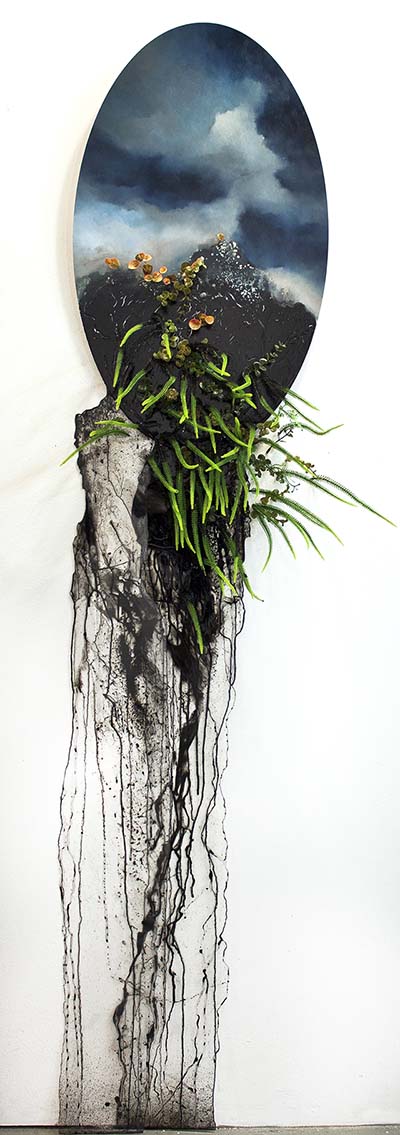
Trouble in Paradise 3
Resa Blatman, 2015
Latex paint on Mylar and PVC; silk and plastic flora
76″h x 17.5″w x 10″d
Image © 2015, courtesy of the artist
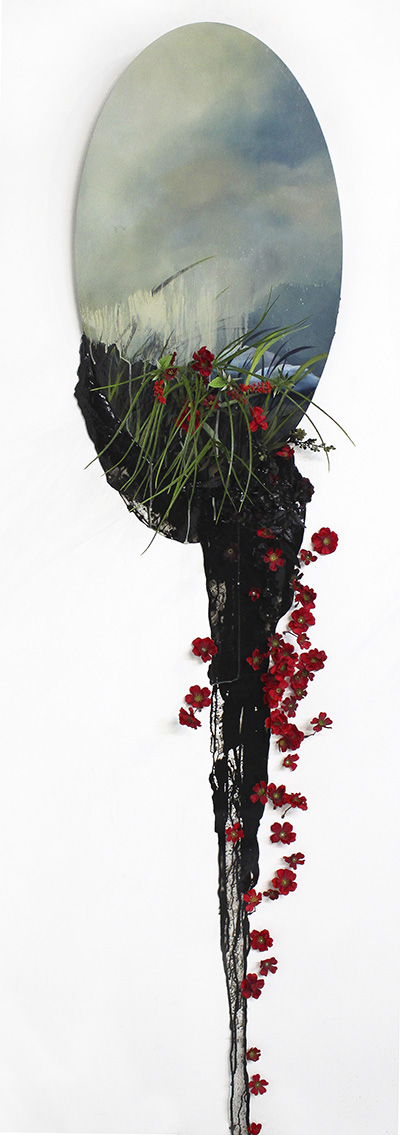
Trouble in Paradise 2
Resa Blatman, 2015
Latex paint on Mylar and PVC; silk and plastic flora
74.5″h x 17.5″w x 10″d
Image © 2015, courtesy of the artist
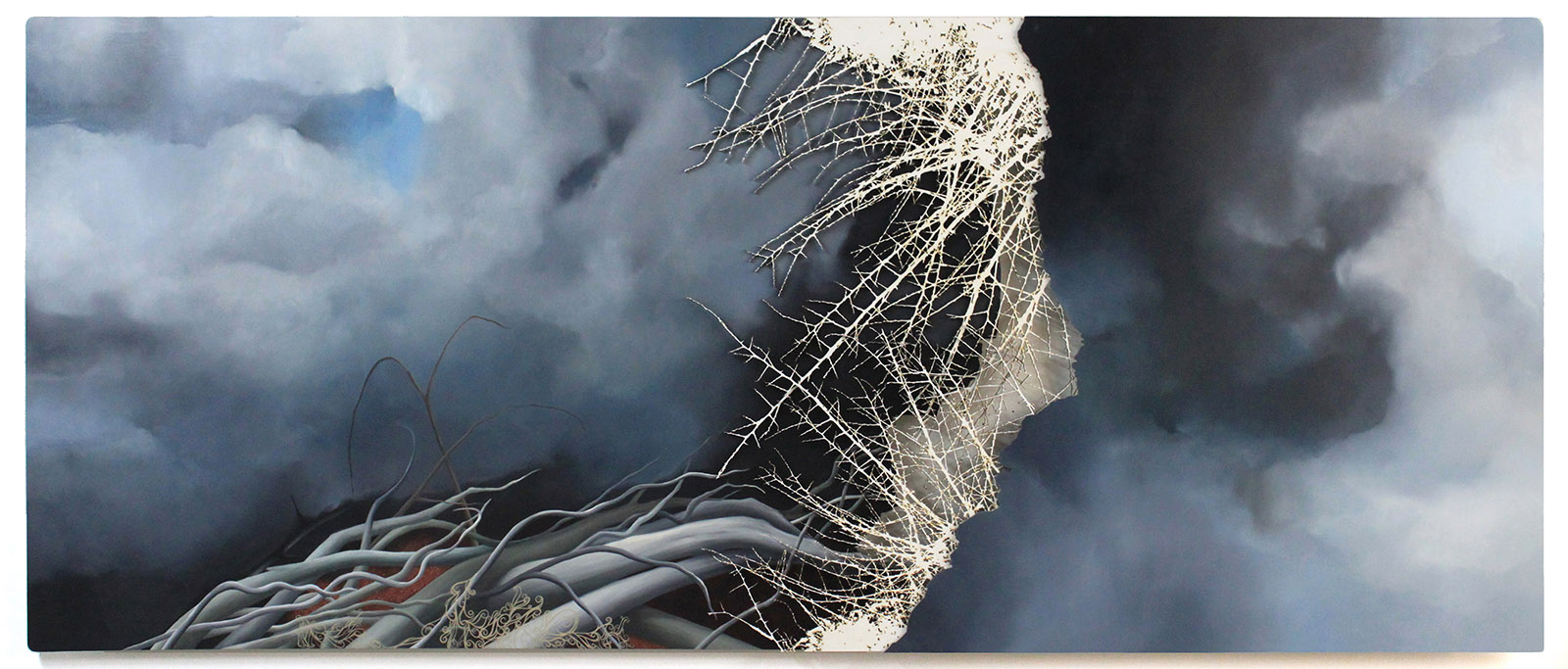
Tempest
Resa Blatman, 2013
Oil and glitter on layered, laser-cut panels, 42″h x 100″w x 3″d
Image © 2013, courtesy of the artist
About the Artist
Resa Blatman identifies her work as a visual commentary on climate change and environmental issues. Her artistic process is filled with intention; she creates heavily layered paintings and installations, combining paint, assemblage pieces, and intricately laser-cut forms that both connect and fragment the artwork. This complexity is meant to reveal nature’s vast beauty, but also its delicate state when subject to the hands of modern humanity. As Blatman would put it, her work seeks to remind us of the “precarious nature of our habitat” and “speaks to the vulnerability of the earth that we so easily take for granted.” Inspired by decorative Victorian, Baroque, and romantic art, Blatman transforms traditional decorative objects into beautifully rendered micro-environments that are at once haunting and lovely. Ominous, dark clouds are a typical backdrop in her works, looming behind an array of painted and sculptural flora that wildly outgrow the frame in which they were once confined. Perhaps Blatman is modeling humanity’s tendency to tame and mold nature, and nature’s struggle to resist those efforts. Each of Blatman’s sublime works is a living entity, gripping to the gallery walls and stretching toward the floor, actively trying to break from their mold and take root. Blatman’s art is a glimpse into the great force of nature and its dynamic vitality. It breathes and lives, destroys and dies, and once again blooms and regenerates. There is a poetic beauty in nature’s self destruction and rebirth, but that beauty can be lost when humanity interrupts this cycle and pushes nature beyond the point of recovery.
Explore These Artworks
In the artist’s words:
“Lush and representational depictions of nature is an ongoing focus in my work. My current paintings and installations speak specifically to a warming planet/environmental issues, their effect on our landscape and natural resources, and how we perceive the changes in the environment. To reflect this concept directly, the paintings’ subjects and surfaces are heavily layered and sometimes the surfaces are split apart, with laser-cut forms that mimic tree branches, coral, and flora. This creates a physicality and metaphorical sound like the poetic violence of an iceberg cracking. As we become even more aware of the precarious nature of our habitat, this work speaks to the vulnerability of the earth that we so easily take for granted.”
A window into the creative process:
“The cut-edge paintings are made on ⅛-¼ inch panels and/or Mylar sheeting. I design the patterns on the computer and then have the panels and sheets professionally laser-cut. Back in the studio, I layer the pieces on top of one another, sometimes cutting them up and making smaller sections, to create one whole painting. When the surface format is complete, I begin the painting process. The cut edges, layered surfaces, and shadows expand the subject matter of the paintings and help to conceive a beauty that is both chaotic and dystopian.”
Learn about the steps the United States Government is taking to increase the resiliency of natural resources and promote green infrastructurehere. Are our governments doing enough to establish the conditions of sustainability?
In Resa Blatman’s work, we see the attempt by humanity to contain nature and nature’s refusal to be controlled. Ruben Ochoa explores similar issues in the urban environment, including a series of images of Ficus trees breaking through sidewalks in Los Angeles. Look for Ruben Ochoa’s work in Part II of the exhibition.
Zoned Out in the 90045, by Ruben Ochoa © 2007, courtesy of the artist and Susanne Vielmetter Los Angeles Projects
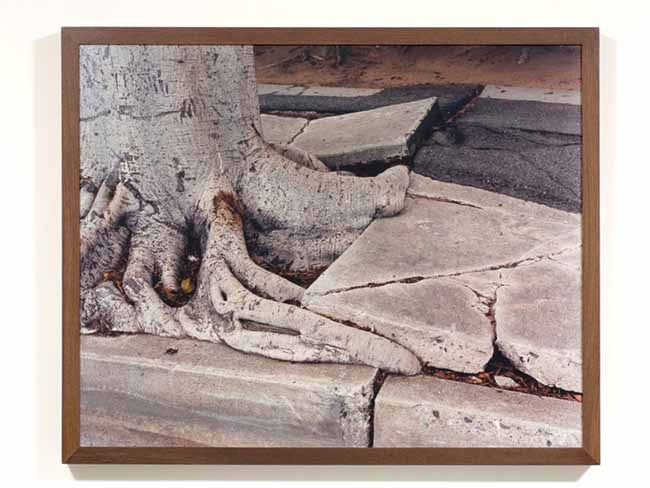
Featured Actions:
* Cut off junk mail! Stop paper statements from banks and other companies. To increase your impact, put a stop to telephone book delivery.
* Stop using virgin paper! Use recycled paper instead. Better yet, reuse the blank side of junk mail and think before you print!
* Your pledge will be counted in Earth Day Network’s “A Billion Acts of Green” campaign. Learn more about this campaignhere.
Reserved for future conversations.











